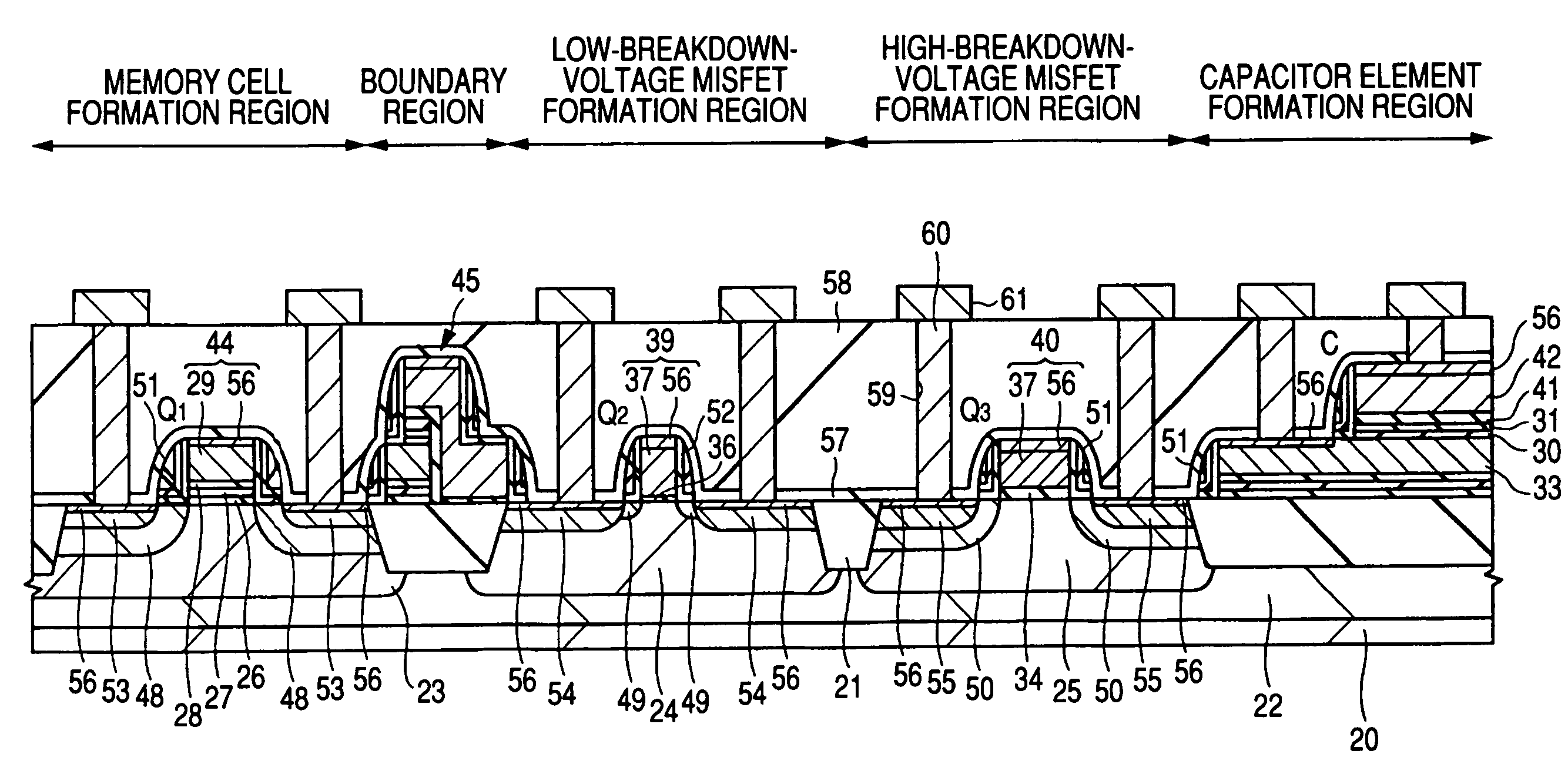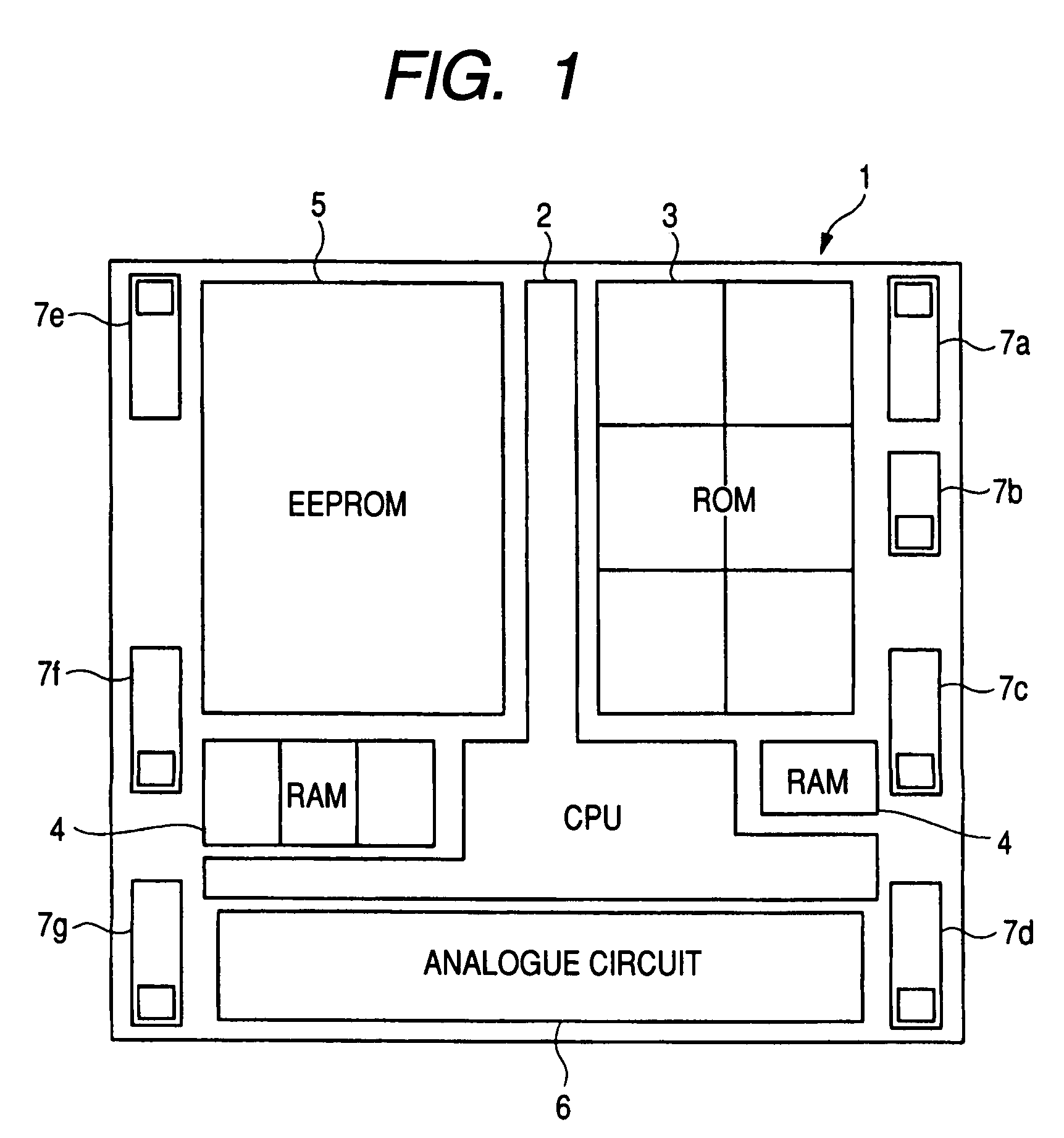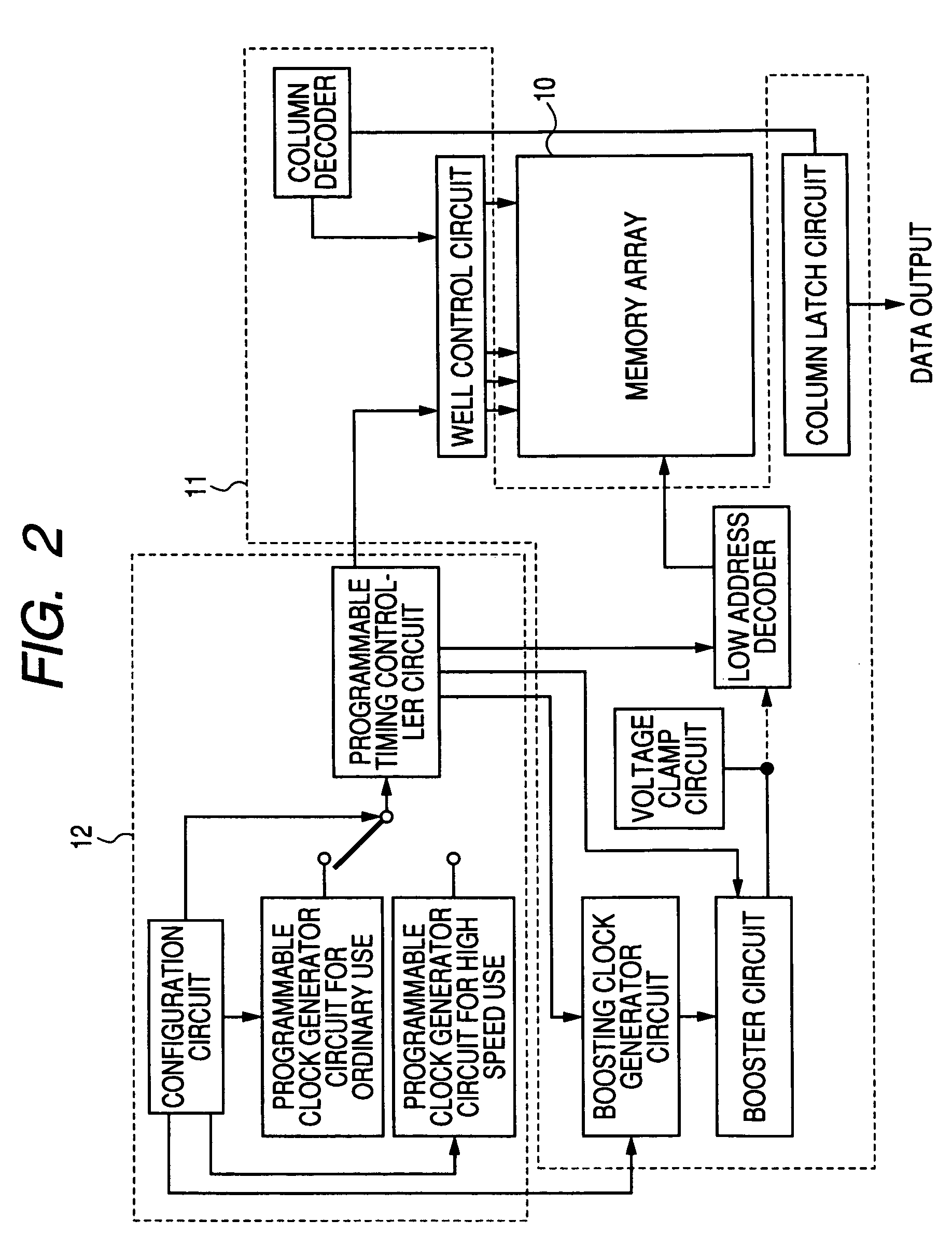Method of manufacturing a semiconductor device
a manufacturing method and technology of a semiconductor device, applied in the direction of semiconductor devices, diodes, electrical devices, etc., can solve problems such as abnormal leakag
- Summary
- Abstract
- Description
- Claims
- Application Information
AI Technical Summary
Benefits of technology
Problems solved by technology
Method used
Image
Examples
embodiment 1
[0090]In Embodiment 1, the present invention is applied to a semiconductor device equipped with a low breakdown voltage MISFET (Metal Insulator Semiconductor) which is driven at a relatively low voltage and a high breakdown voltage MISFET which is driven at a relatively high voltage to enable high-voltage operation and having a programmable nonvolatile memory; and a manufacturing method thereof. In the MISFET, the term “breakdown voltage” means a pn junction breakdown voltage which will be generated at the boundary between a source region and a semiconductor substrate (well) or between a drain region and the semiconductor substrate (well) constituting the MISFET, or a withstand voltage of a gate insulating film. In Embodiment 1, a high breakdown voltage MISFET having a relatively high breakdown voltage and a low breakdown voltage MISFET having a relatively low breakdown voltage are formed over one semiconductor substrate.
[0091]The constitution of the semiconductor device in this Emb...
embodiment 2
[0172]In Embodiment 1, when the gate electrode 39 of the low breakdown voltage MISFET and the gate electrode 40 of the high breakdown voltage MISFET are formed, all of the gate insulating film 34, polysilicon film 37 and cap insulating film 38 are removed from the memory cell formation region. In Embodiment 2, on the other hand, described is an example of leaving the gate insulating film 34, polysilicon film 37 and cap insulating film 38 in the MONOS transistor formation region of the memory cell formation region when the gate electrodes 39 and 40 are formed.
[0173]The manufacturing method of the semiconductor device according to Embodiment 2 is similar to that of Embodiment 1 in the steps illustrated in FIGS. 5 to 11. Then, as illustrated in FIG. 19, the gate electrode 39 and the gate electrode 40 are formed in the low breakdown voltage MISFET formation region and the high breakdown voltage MISFET formation region, respectively, by using photolithography and etching. At this time, a...
embodiment 3
[0179]In Embodiment 1, described was an example of forming the gate electrode 44 of the MONOS transistor after formation of the gate electrode 39 of the low breakdown voltage MISFET and the gate electrode 40 of the high breakdown voltage MISFET. In Embodiment 3, an example of forming the gate electrode 44 of the MONOS transistor, followed by the formation of the gate electrode 39 of the low breakdown voltage MISFET and the gate electrode 40 of the high breakdown voltage MISFET will be described.
[0180]In Embodiment 3, the memory cell formation region corresponds to the second region, while the low breakdown voltage MISFET formation region and high breakdown voltage MISFET formation region correspond to the first region. In other words, the MONOS transistor corresponds to the second MISFET and the low breakdown voltage MISFET and high breakdown voltage MISFET correspond to the first MISFET.
[0181]A step in the manufacturing method of the semiconductor device according Embodiment 3 is s...
PUM
 Login to View More
Login to View More Abstract
Description
Claims
Application Information
 Login to View More
Login to View More - R&D
- Intellectual Property
- Life Sciences
- Materials
- Tech Scout
- Unparalleled Data Quality
- Higher Quality Content
- 60% Fewer Hallucinations
Browse by: Latest US Patents, China's latest patents, Technical Efficacy Thesaurus, Application Domain, Technology Topic, Popular Technical Reports.
© 2025 PatSnap. All rights reserved.Legal|Privacy policy|Modern Slavery Act Transparency Statement|Sitemap|About US| Contact US: help@patsnap.com



